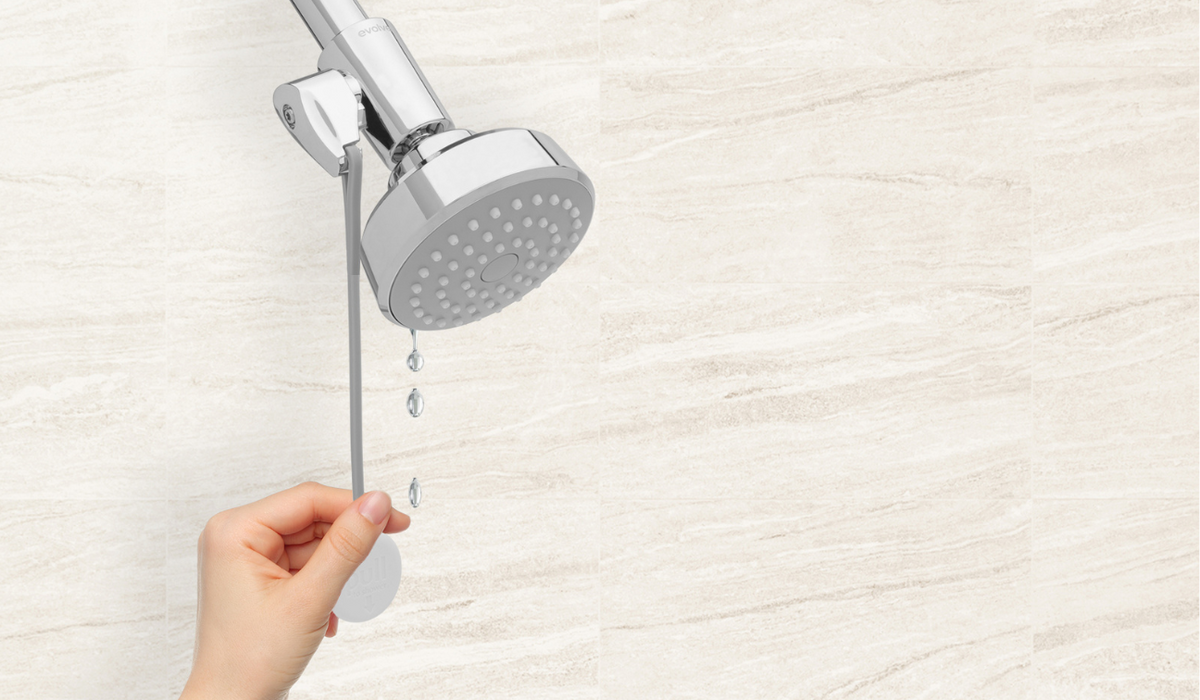With the average American household using up to 40 gallons of water per day just by showering, this is an area ripe with potential savings opportunities. But to make the biggest efficiency improvements, it helps to understand the two biggest contributors to water and energy waste: structural waste and behavioral waste. Once you know them, you can target areas and products for saving water and energy while improving showering comfort and convenience.
What is Structural Waste?
This is the first phase of a shower or bath where the water that sits in the pipes from the last bathing session must exit. It starts when the tub spout or showerhead are turned on and ends when the water is warm enough for the bather to get in. It usually lasts about one minute and wastes 1.5-2.5 gallons of cold water.
Part of structural waste is inescapable because water must always travel from the hot water heater to the bathroom, and most people, except for your pickleball-obsessed neighbor who wants “extreme” starts to their day, aren’t up for icy showers. Over the years, structural waste time has increased due to two main factors: houses are getting larger, and showerheads are more efficient. For all their water and energy-saving power, efficient showerheads actually slow down the time it takes to purge cold water from the pipes.
But that doesn’t mean you throw out the showerhead (or the bigger house) with the bathwater.
How to Reduce Structural Waste
Most of us can’t change the distance between the water heater and the bathroom. We also want to keep our efficient showerheads, which save water and reduce energy bills. So, what’s to be done? Here are a few tips for reducing structural waste:
1. Repurpose that cold water.
Well, the cold water is going down the drain anyway, so why not collect it and use it for something else? Residents can set up a container in the tub or shower stall to catch all that water and then use it to water houseplants or give Fido a drink. However, it’s understandable if some people wouldn’t like a bucket bathing companion, so then you could . . .
2. Use the tub spout.
An efficient showerhead can have a gallons per minute (gpm) flow rate as low as 1.25 gpm. Speed up the cold water purging process by turning on the tub spout first. Tub spouts flow at 4-7 gpm, so water arrives in seconds rather than minutes. However, that runs the risk of a bather letting good, hot water be wasted if they step away from the shower. Or it might require a bather standing at the tub and checking the water temperature, waiting for it to warm, a potentially painstaking process indeed. So, another option would be to . . .
3. Install water-saving products.
Let us introduce you to some great technology: thermostatic shut-off valve (TSV) devices. They ingeniously pause water flow once it gets hot enough to bathe. This means residents don’t have to shower with a bucket or monitor water temperature like a lab tech. A TSV device can be attached to the shower arm and be used with any showerhead. Cold water will still flow out (knock yourself out and set up a bucket to catch it if you really want to) but the flow reduces to a trickle once the water reaches 95 degrees F. Then the user just pulls the cord attached to the TSV to resume a full flow. Reduce structural waste even further by getting a tub spout and shower system that has a TSV. You turn on the tub spout to purge the cold water, but instead of waiting around or potentially wasting warm water, the water automatically diverts to the showerhead and pauses once it gets hot. Don’t have a tub spout? No problem. TSVs can also be found in showerheads that come with a “purge port” that serves the same function as the tub spout. It lets the cold water exit the port and then moves to the showerhead when bathing temperature is reached.
Now that you have some ideas for reducing structural waste, congratulations! You’re halfway to a more efficient bath and shower experiment. In the next blog we’ll cover ways to reduce behavioral waste, which is almost more about bathing psychology than conservation. Check it out here!
